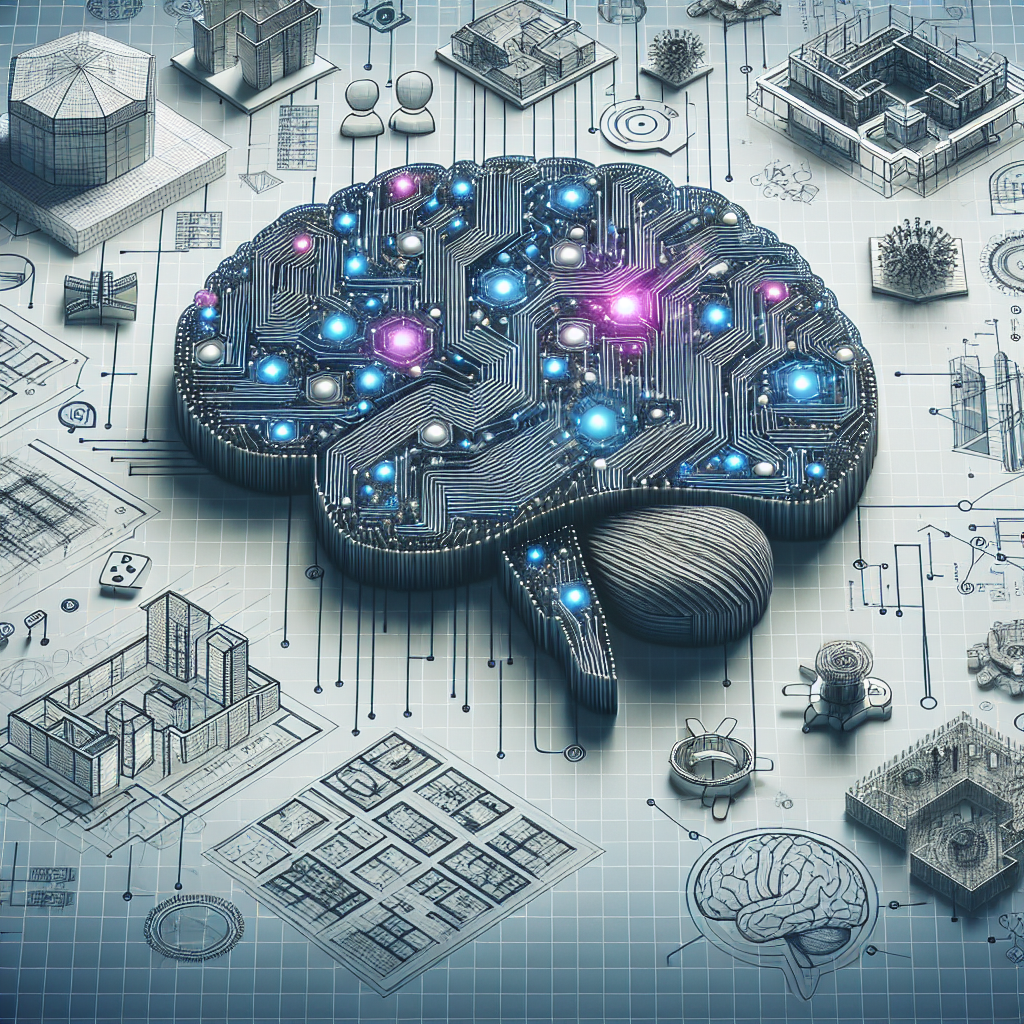The Intersection of AI and Neuroscience in Architecture
In recent years, the fields of artificial intelligence (AI) and neuroscience have been increasingly intersecting, leading to new innovations and advancements in various industries. One of the areas where this intersection is particularly promising is in architecture. By combining the insights and techniques from both AI and neuroscience, architects are able to create buildings and spaces that are not only aesthetically pleasing but also optimized for human well-being and productivity.
AI in Architecture
Artificial intelligence has revolutionized the field of architecture in many ways. One of the key applications of AI in architecture is in the design process. AI algorithms can analyze vast amounts of data and generate design options that are optimized for various factors such as energy efficiency, structural integrity, and spatial functionality. This can help architects to explore a wider range of design possibilities and make more informed decisions.
AI can also be used in the construction phase of a project. For example, AI-powered robots can be used to automate certain tasks such as bricklaying or welding, leading to faster and more efficient construction processes. AI can also be used to monitor and optimize the performance of a building once it is completed, for example by adjusting lighting and temperature settings based on occupancy patterns.
Neuroscience in Architecture
Neuroscience is the study of the brain and nervous system, and how they influence human behavior and cognition. In architecture, neuroscience can provide valuable insights into how the design of a space can affect the well-being and productivity of its occupants. For example, research has shown that exposure to natural light can improve mood and cognitive performance, while certain colors and textures can have a calming effect on the mind.
Neuroscience can also inform the design of spaces that are optimized for specific tasks, such as offices or schools. By understanding how different environments impact cognitive function, architects can create spaces that are tailored to the needs of their users. For example, an office space designed with an understanding of cognitive ergonomics can help to reduce stress and improve focus and productivity.
The Intersection of AI and Neuroscience in Architecture
When AI and neuroscience are combined in the field of architecture, the possibilities are truly exciting. By leveraging AI algorithms to analyze data on how different design elements impact human behavior and cognition, architects can create spaces that are not only visually appealing but also optimized for human well-being and productivity.
For example, AI can be used to analyze data on how different lighting conditions affect mood and cognitive performance, and then recommend design options that maximize the benefits of natural light. Similarly, AI algorithms can be used to analyze data on how different colors and textures impact stress levels, and then recommend design options that promote relaxation and mental clarity.
Neuroscience can also inform the development of AI algorithms for architecture. By studying how the brain processes and responds to different environmental stimuli, researchers can develop AI models that simulate human perception and cognition. These models can then be used to predict how different design options will be perceived and experienced by occupants, helping architects to make more informed design decisions.
FAQs
Q: How can AI be used in the design process of architecture?
A: AI algorithms can analyze vast amounts of data and generate design options that are optimized for factors such as energy efficiency, structural integrity, and spatial functionality.
Q: How can neuroscience inform the design of spaces in architecture?
A: Neuroscience research can provide insights into how different design elements impact human behavior and cognition, helping architects to create spaces that are optimized for human well-being and productivity.
Q: What are some examples of how AI and neuroscience can be combined in architecture?
A: AI algorithms can analyze data on how different design elements impact human behavior and cognition, and then recommend design options that are optimized for human well-being and productivity.
Q: How can AI and neuroscience help to improve the performance of buildings once they are completed?
A: AI algorithms can be used to monitor and optimize the performance of a building, for example by adjusting lighting and temperature settings based on occupancy patterns, to improve energy efficiency and occupant comfort.
In conclusion, the intersection of AI and neuroscience in architecture has the potential to revolutionize the way we design and experience buildings and spaces. By combining the insights and techniques from both fields, architects can create spaces that are not only visually stunning but also optimized for human well-being and productivity. As this interdisciplinary approach continues to evolve, we can expect to see even more innovative and sustainable architectural designs that enhance the quality of life for their occupants.

